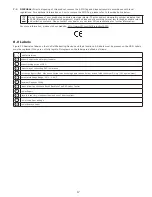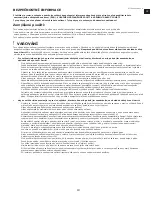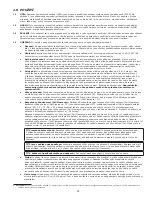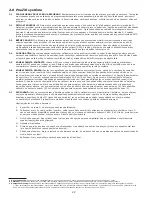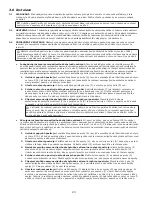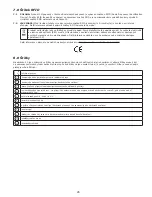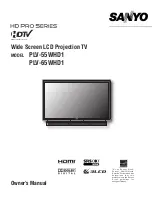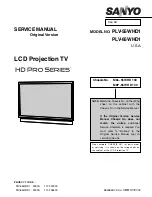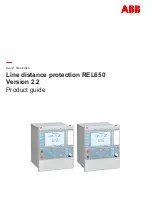
12
1.0 APPLICATIONS
1.1 PURPOSE:
Self-Retracting Devices (SRDs) are designed to be a component in a personal fall arrest system (PFAS).
Figure 1 illustrates SRDs covered by this instruction manual. They may be used in most situations where a combination
of worker mobility and fall protection is required (i.e. inspection work, general construction, maintenance work, oil
production, confined space work, etc.).
1.2 STANDARDS:
Your SRD conforms to the national or regional standard(s) identified on the front cover of these
instructions. Refer to the local, state, and federal (OSHA) requirements governing occupational safety for additional
information regarding Personal Fall Protection.
1.3 TRAINING:
This equipment is intended to be used by persons trained in its correct application and use. It is the responsibility of the
user to assure they are familiar with these instructions and are trained in the correct care and use of this equipment. Users must also
be aware of the operating characteristics, application limits, and the consequences of improper use.
1.4 LIMITATIONS:
Always consider the following limitations when installing or using this equipment:
• Capacity:
SRDs are for use by one person with a combined weight (clothing, tools, etc.) meeting the
Capacity Range
specified in Table 1. Make sure all of the components in your system are rated to a capacity appropriate to your
application.
• Anchorage:
Anchorage structure for the SRD must be capable of supporting loads up to 12 kN (2,697 lbf). Anchor
devices must conform to EN795 or other applicable anchorage connector standards.
• Locking Speed:
Situations which do not allow for an unobstructed fall path should be avoided. Working in confined
or cramped spaces, or on a sloped surface, may not allow the body to reach sufficient speed to cause the SRD to lock
if a fall occurs. Working on slowly shifting material, such as sand or grain,may not allow enough speed buildup to
cause the SRD to lock. A clear path is required to assure positive locking of the SRD.
• Free Fall:
When anchored overhead, SRDs will limit the free fall distance to 0.6 m (2 ft.)
1
. To avoid increased fall distances,
anchor the SRD directly above the work level. Never attach the SRD to an anchor point that will create a free fall greater
than 1.5 m (5 ft). Avoid working where your lifeline may cross or tangle with the lifeline of another worker. Avoid working
where an object may fall and strike the lifeline; resulting in loss of balance or damage to the lifeline. Do not allow the
lifeline to pass under arms or between legs. Never clamp, knot, or prevent the lifeline from retracting or being taut. Avoid
slack line.
Do not lengthen SRDs by connecting a lanyard or similar component without consulting 3M.
• Swing Falls:
Swing Falls occur when the anchorage point is not directly above the point where a fall occurs. The
force of striking an object in a swing fall may cause serious injury (see Figure 3A). Minimize swing falls by working as
directly below the anchorage point as possible (Figure 3B). Working away from the anchorage point (Figure 3C) will
increase the impact of a swing fall and increase the required Fall Clearance (FC).
• Fall Clearance:
Figure 3B illustrates Fall Clearance Calculation. Fall Clearance (FC) is the sum of Free Fall (FF),
Deceleration Distance (DD) and a Safety Factor (SF): FC = FF +DD + SF. D-Ring Slide and Harness Stretch are included in
the Safety Factor. Fall Clearance values have been calculated and are charted in Figure 4. A Safety Factor of 1 m (3.28 ft)
was used for all values in Figure 4.
Figure 4 illustrates Fall Clearance (FC) based on the Horizontal (H) and Vertical (V) distance between the dorsal SRD
connection and the anchorage point. Each horizontal grid line on the chart(s) represents vertical distance from the
anchorage point. Each vertical grid line represents horizontal distance from the anchorage point. The Fall Clearance
value (FC) is determined by the zone (parabolic lines) in which the Horizontal (H) and Vertical (V) grid lines intersect.
The example in Figure 4 shows how to determine the required Fall Clearance value (FC) for the stated Vertical (V)
and Horizontal (H) distances.
;
Variable Anchor Points:
Fall Clearances in Figure 4 are based on a rigid, stationary anchor point. If anchoring
to a Horizontal Lifeline (HLL) or anchor point that can move, slide, or deform during a fall, the Fall Clearance values
from Figure 4 will not apply. Refer to the instructions for the HLL or anchor for additional details regarding required
fall clearances, deflections, and/or deformation.
;
Kneeling or Crouching:
The Clearance Charts in Figure 4 assume the worker is in a standing position, with
the SRD anchored above the dorsal D-ring. If the worker will be kneeling or crouching, an additional 0.9 m (3 ft) of
Fall Clearance is required.
;
Never Anchor below the feet:
Never connect to an anchorage point below your feet.
• Hazards:
Use of this equipment in areas where surrounding hazards exist may require additional precautions to reduce the
possibility of injury to the user or damage to the equipment. Hazards may include, but are not limited to: high heat, caustic
chemicals, corrosive environments, high voltage power lines, explosive or toxic gases, moving machinery, or overhead materials
that may fall and contact the user or fall arrest system. Avoid working where your lifeline may cross or tangle with that of another
worker. Avoid working where an object may fall and strike the lifeline; resulting in loss of balance or damage to the lifeline. Do not
allow the lifeline to pass under arms or between legs.
•
Sharp Edges:
Sharp edges the SRD lifeline can contact during a fall must have a minimum radius of 0.3 cm (0.125 in).
Where contact with a sharp edge is unavoidable, cover the edge with a protective material.
1 Free Fall:
Correct application of the SRD, with the user working directly below the anchorage point and no lifeline slack, will eliminate Free Fall. See Figure 4 for
acceptable anchorage locations.
Summary of Contents for DBI-SALA Nano-Lok 3101521
Page 2: ......
Page 3: ...3 2 A C B E D E D A C B D F A C B F D D A A B B C C 3 A B FC FF DD SF FC FF DD SF C FC H ...
Page 4: ...4 4 x 1 140 kg V H FC V 1 2 m H 1 2 m FC 5 0 m V H FC x 1 140 kg 5 6 A B C A B C D E G 7 ...
Page 5: ...5 8 9 1 B A B A Delta III ExoFit NEX 2 C C D 3 E A C 4 F D D ...
Page 6: ...6 10 1 A B B A Delta III ExoFit NEX 2 D D C E 3 G H F 4 F A 5 F E I G E 6 D D C A D D K K C J ...
Page 7: ...7 11 1 A B 2 C D D 3 E G F 4 A E 5 E F 6 D C A ...
Page 8: ...8 12 E D A D G B F C F 13 14 A B C 15 ...
Page 9: ...9 16 17 18 19 C D B B A A E E A B C D A B 20 A B A B C E D C D 7 10 4 5 6 E 1 2 3 8 9 11 ...
Page 174: ......
Page 175: ......

















